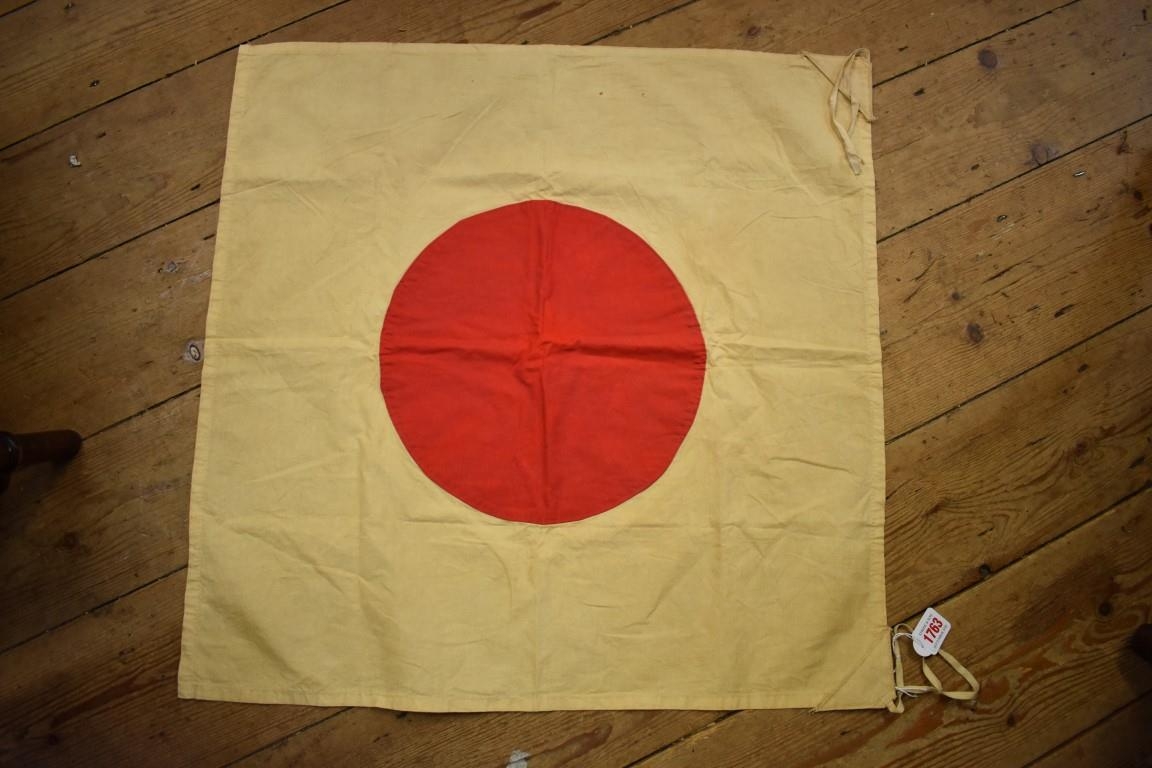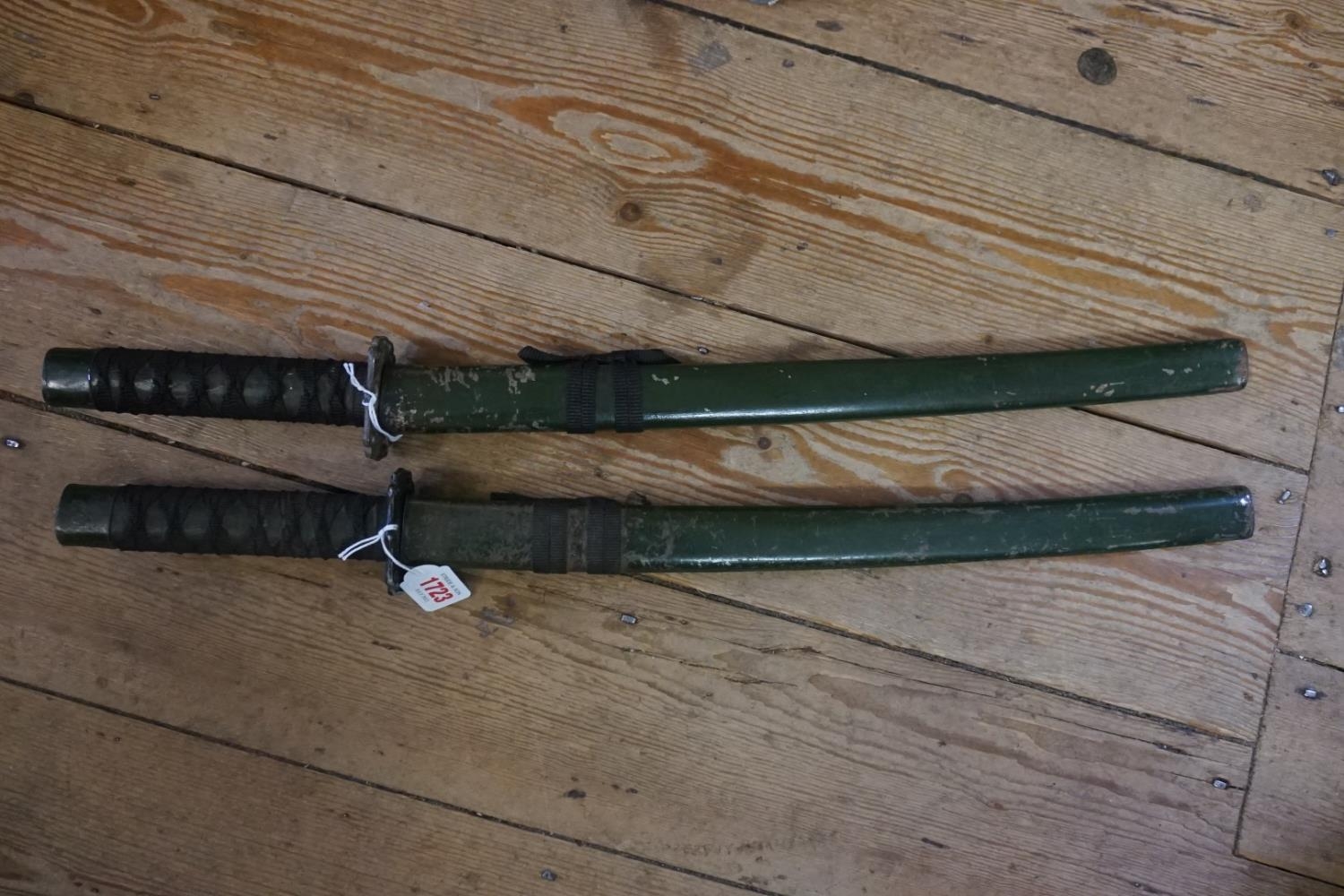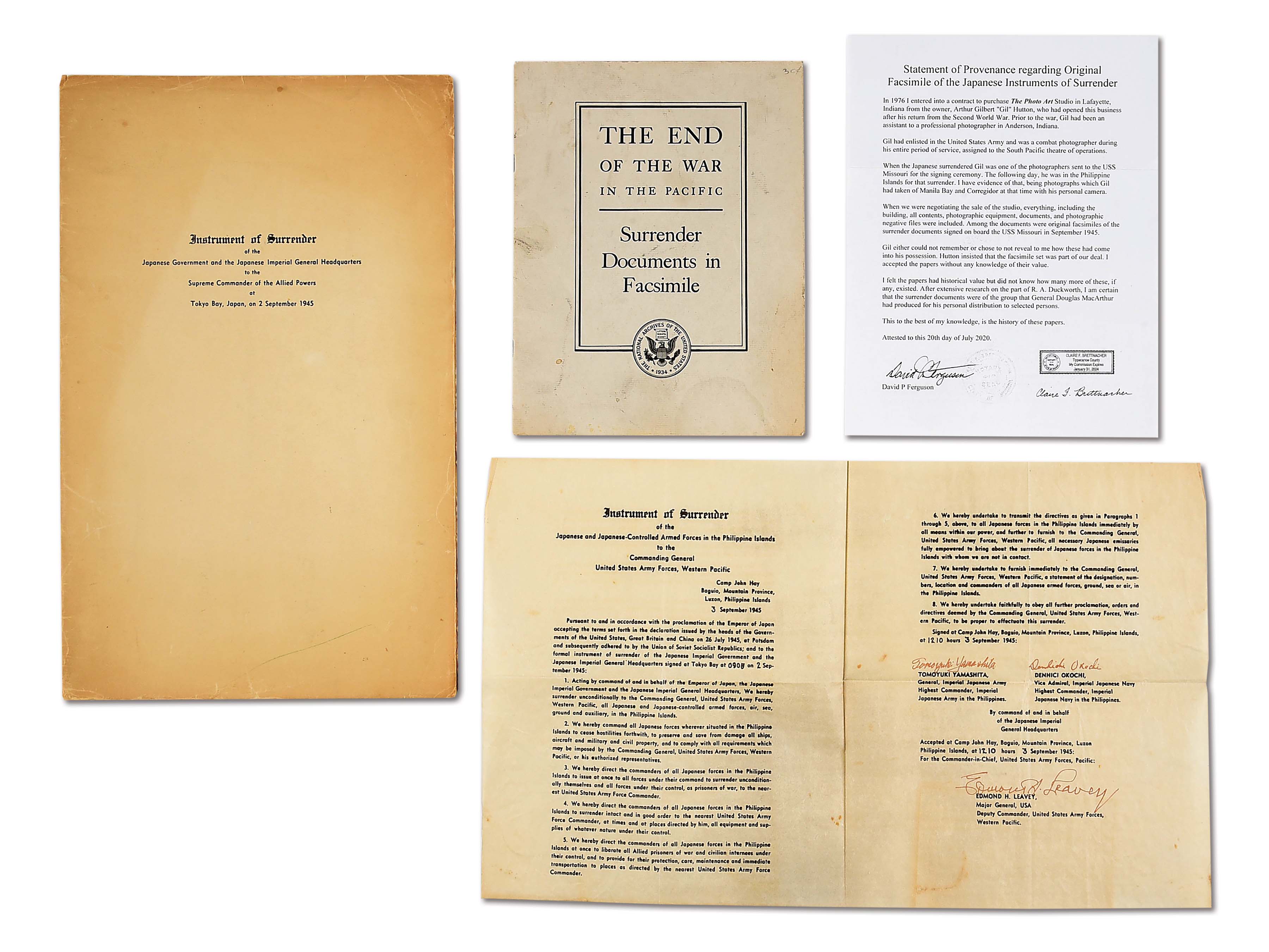WORLD WAR II]. [JAPANESE INTERNMENT]. Two printed broadsides: "Instructions to All Persons of Japanese Ancestry," and "Civilian Exclusion Order No. 53," both dated Presidio of San Francisco, California, 7 May 1942. Both 18 x 27 inches, matted . AMERICA'S CONCENTRATION CAMPS. Two vivid artifacts from a shameful chapter in American history. Two months after Pearl Harbor--and with fears of sabotage and hatred of Japanese running high--President Franklin Roosevelt issued an Executive Order empowering the War Department to expel Japanese Americans from "Military Areas" on the West Coast. Here, General J. L. DeWitt implements the decree, issuing a Civilian Exclusion order that commands "all persons of Japanese ancestry, both alien and non-alien," to "be excluded from that portion of the Military Area No. 1 described as follows: all of the City of Stockton, State of California." A "responsible member of each family, and each individual living alone" were to report between 8 a.m. and 5 p.m. on 8 May or 9 May 1942 at National Guard armory building on 1420 North California Street in Stockton. Anyone failing to comply and found in Stockton after 13 May 1942 would be punished with up to a year in jail and a $5,000 fine. The accompanying broadside details what the internees were to bring with them: "bedding and linens (no mattress) for each member of the family," toilet articles, extra clothing, "sufficient knives, forks, spoons, plates bowls and cups for each member of the family," and "essential personal effects....No pets of any kind will be permitted." Over 110,000 Japanese Americans were forced out of their homes and moved to camps in remote sites in Colorado, Arizona, Utah, Wyoming, Idaho and California. Most remained there until 1945, even though thousands of Japanese volunteered to fight in Europe and North Africa, and indeed, interned Japanese were still subject to the draft. The Supreme Court affirmed the governments' actions in the Korematsu and Hirabayashi cases in 1943 and 1944--with even avowed civil libertarians such as William O. Douglas and Hugo Black endorsing the policy. Dissenting Justice Frank Murphy, however, denounced the camps, saying "Such exclusion goes over the very brink of constitutional power and falls into the ugly abyss of racism." Not until 1988 did the government agree. It paid $20,000 to surviving internees, along with a Presidential letter of apology. Together two items . (2)
WORLD WAR II]. [JAPANESE INTERNMENT]. Two printed broadsides: "Instructions to All Persons of Japanese Ancestry," and "Civilian Exclusion Order No. 53," both dated Presidio of San Francisco, California, 7 May 1942. Both 18 x 27 inches, matted . AMERICA'S CONCENTRATION CAMPS. Two vivid artifacts from a shameful chapter in American history. Two months after Pearl Harbor--and with fears of sabotage and hatred of Japanese running high--President Franklin Roosevelt issued an Executive Order empowering the War Department to expel Japanese Americans from "Military Areas" on the West Coast. Here, General J. L. DeWitt implements the decree, issuing a Civilian Exclusion order that commands "all persons of Japanese ancestry, both alien and non-alien," to "be excluded from that portion of the Military Area No. 1 described as follows: all of the City of Stockton, State of California." A "responsible member of each family, and each individual living alone" were to report between 8 a.m. and 5 p.m. on 8 May or 9 May 1942 at National Guard armory building on 1420 North California Street in Stockton. Anyone failing to comply and found in Stockton after 13 May 1942 would be punished with up to a year in jail and a $5,000 fine. The accompanying broadside details what the internees were to bring with them: "bedding and linens (no mattress) for each member of the family," toilet articles, extra clothing, "sufficient knives, forks, spoons, plates bowls and cups for each member of the family," and "essential personal effects....No pets of any kind will be permitted." Over 110,000 Japanese Americans were forced out of their homes and moved to camps in remote sites in Colorado, Arizona, Utah, Wyoming, Idaho and California. Most remained there until 1945, even though thousands of Japanese volunteered to fight in Europe and North Africa, and indeed, interned Japanese were still subject to the draft. The Supreme Court affirmed the governments' actions in the Korematsu and Hirabayashi cases in 1943 and 1944--with even avowed civil libertarians such as William O. Douglas and Hugo Black endorsing the policy. Dissenting Justice Frank Murphy, however, denounced the camps, saying "Such exclusion goes over the very brink of constitutional power and falls into the ugly abyss of racism." Not until 1988 did the government agree. It paid $20,000 to surviving internees, along with a Presidential letter of apology. Together two items . (2)















Testen Sie LotSearch und seine Premium-Features 7 Tage - ohne Kosten!
Lassen Sie sich automatisch über neue Objekte in kommenden Auktionen benachrichtigen.
Suchauftrag anlegen